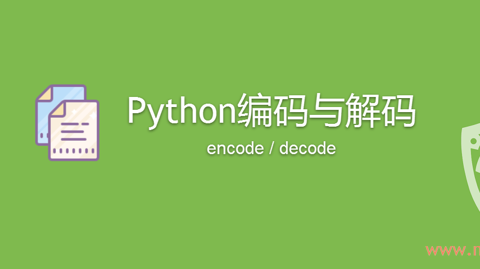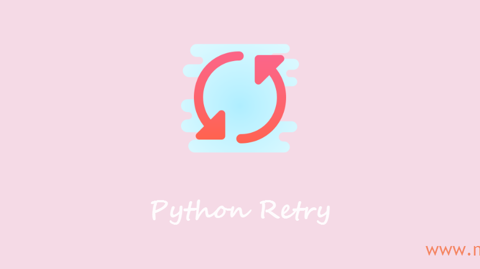Python基础: 容器

Synopsis: 字符串是Python中最常用的数据类型,我们可以使用单引号'或双引号"来创建字符串。input函数获取的输入数据全是字符串类型。字符串对象是不可变对象,无法修改内容,所谓"修改"只是创建新的字符串对象,并把原对象引用指向该新字符串对象。一旦创建了元组,则不能再修改元组的元素,包括不能删除其中的元素
1. 字符串
字符串是Python中最常用的数据类型,我们可以使用单引号'或双引号"来创建字符串。input函数获取的输入数据全是字符串类型。
1.1 字符串运算符
字符串对象是不可变对象,无法修改内容,所谓"修改"只是创建新的字符串对象,并把原对象引用指向该新字符串对象。
| 操作符 | 描述 | 实例 a='Hello', b='Python' |
|---|---|---|
+ |
字符串连接 | a+b输出: HelloPython |
* |
重复输出字符串 | a*2输出: HelloHello |
[] |
通过索引获取字符串中字符 | a[1]输出: e |
[:] |
截取字符串的一部分 | a[1:3]输出: el |
in |
成员运算符 - 如果字符串中包含给定的字符返回 True | 'H' in a输出: True |
not in |
成员运算符 - 如果字符串中不包含给定的字符返回 True | 'A' not in a输出: True |
r/R |
原始字符串 - 原始字符串:所有的字符串都是直接按照字面的意思来使用,没有转义特殊或不能打印的字符。 原始字符串除在字符串的第一个引号前加上字母"r"(可以大小写)以外,与普通字符串有着几乎完全相同的语法。 | print(r'\n')输出: \n |
1.2 字符串格式化
建议使用新的字符串格式化函数str.format(),通过{}和:来代替以前的%。format函数可以接受任意个数的参数,位置也可以不按顺序。
In [1]: "{} {}".format("Hello", "World") Out[1]: 'Hello World' In [2]: "{0} {1}".format("Hello", "World") Out[2]: 'Hello World' In [3]: person = {'name': 'wangy', 'age': 18} In [4]: print("姓名: {name}, 年龄: {age}".format(**person)) 姓名: wangy, 年龄: 18 In [5]: learn = ['c', 'python'] In [6]: print("静态语言: {0[0]}, 动态语言: {0[1]}".format(learn)) 静态语言: c, 动态语言: python
数字格式化:
^,<,>分别是居中、左对齐、右对齐,后面是宽度,:冒号后面是填充的字符,只能是一个字符,不指定则默认是用空格填充。+表示在正数前显示+,负数前显示-(空格)表示在正数前加空格b、d、o、x分别是二进制、十进制、八进制、十六进制- 使用大括号
{{}}来转义大括号
1.3字符串内建函数
(1) 字母大小写
① S.upper()
返回字符串中所有字母的大写形式。
② S.lower()
返回字符串中所有字母的小写形式。
③ S.swapcase()
将字符串中的字母大小写互换。
④ S.capitalize()
整个字符串中只有第一个单词的首字母大写。
⑤ S.title()
整个字符串中所有单词的首字母都大写。
(2) 格式化
① S.ljust(width[, fillchar])
获取固定长度,左对齐,右边不够默认用空格补齐。
② S.rjust(width[, fillchar])
获取固定长度,右对齐,左边不够默认用空格补齐。
③ S.center(width[, fillchar])
获取固定长度,中间对齐,两边不够默认用空格补齐。
④ S.zfill(width)
获取固定长度,右对齐,左边不足用0补齐。
(3) 搜索
① S.find(sub[, start[, end]])
在字符串中搜索子串第一次出现的位置(可以指定搜索范围,默认是整个字符串),如果搜索不到,则返回-1
S.find()可以用S.index(sub[, start[, end]])替代,只是如果没有查找到子串时,S.index()会抛异常ValueError
index(...) S.index(sub[, start[, end]]) -> int Like S.find() but raise ValueError when the substring is not found.
② S.rfind(sub[, start[, end]])
在字符串中搜索子串最后一次出现的位置(可以指定搜索范围,默认是整个字符串),相当于从右边开始查找。如果搜索不到,则返回-1
S.rfind()可以用S.rindex(sub[, start[, end]])替代,只是如果没有查找到子串时,S.rindex()会抛异常ValueError
③ S.count(sub[, start[, end]])
在字符串中搜索子串总共出现多少次(可以指定搜索范围,默认是整个字符串),如果搜索不到,则返回0
(4) 替换
① S.replace(old, new[, count])
在字符串中将old子串替换为new子串,默认替换掉所有old子串
In [1]: a = 'hello world, hello python' In [2]: a.replace('hello', '你好') Out[2]: '你好 world, 你好 python' In [3]: a.replace('hello', '你好', 1) Out[3]: '你好 world, hello python'
② S[::-1]
反转字符串
(5) 移除字符串头尾指定的字符
默认移除空白符(包括\n, \r, \t, )
① S.strip([chars])
移除字符串的首尾字符
In [1]: a = ' \t hello world \r\n ' In [2]: a.strip() Out[2]: 'hello world' In [3]: a = '---hello world---' In [4]: a













0 条评论
评论者的用户名
评论时间暂时还没有评论.